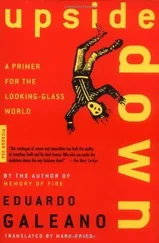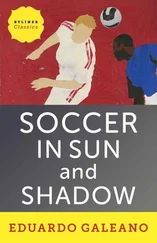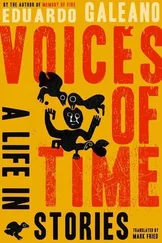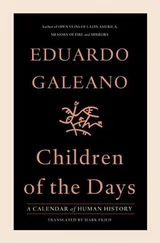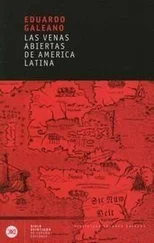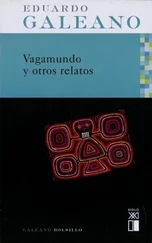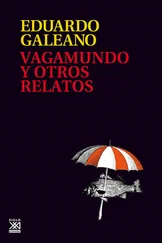At the end of the nineteenth century, bullets from Remingtons brought the clearing of the Patagonia to a close.
As the few survivors of the killing departed, they sang a lament:
Land of mine do not leave me,
no matter how far away I go.
During his trip through the region, Charles Darwin had already warned that the natives were dying out not by natural selection but due to a government policy of extermination. Domingo Faustino Sarmiento believed that savage tribes constituted “a danger to society,” and the architect of the final safari, General Roca, called his victims “wild animals.”
The army undertook the hunt in the name of public security, but the Indians’ lands were also tempting. When the Rural Society congratulated him on his mission accomplished, General Roca proclaimed:
“Forever free from Indian domination is this incredibly vast territory that now offers astonishing promise to immigrants and foreign capital.”
Six million hectares passed into the hands of sixty-seven landowners. When he died in 1914, Roca left his inheritors sixty-five thousand hectares of land stolen from the Indians.
During his lifetime, not all Argentines appreciated the dedication of this warrior for the fatherland, but death enhanced his stature: now his is the country’s tallest statue and thirty-five other monuments commemorate him, his figure graces the highest-denomination bill, and a city plus numerous avenues, parks, and schools bear his name.

A massacre inaugurated Uruguay’s independence.
In July 1830, the constitution was approved, and a year later the new country was baptized in blood.
About five hundred Charrúa Indians, who had survived centuries of conquest, persecution, and harassment, were living north of the Negro River, exiles in their own land.
The new government summoned them to a meeting. The chiefs came accompanied by their people. They were promised peace, jobs, respect.
They ate, drank, and continued drinking until they passed out. Then, by sword and bayonet, they were executed.
This act of betrayal was termed a battle. And from then on the gulch where it occurred was called Salsipuedes—“Get out if you can.”
Very few men got out. The women and children were shared around, the former as flesh for the barracks, the latter as slaves for the posh families of Montevideo.
Fructuoso Rivera, Uruguay’s first president, planned and later celebrated “this civilizing mission to put an end to the raids of the savage hordes.”
Foretelling the crime, he had written: “It will be grand, it will be beautiful.”
The country’s longest street, which cuts across the city of Montevideo, bears his name.

A father and son were strolling along Havana’s flower-filled streets when they ran across a bald and skinny gentleman hurrying as if he were late.
And the father warned the son:
“Watch out for that one. He’s white outside, but on the inside he’s black.”
The son, Fernando Ortiz, was fourteen.
Some time later, Fernando was to rescue, from centuries of racist denial, the hidden black roots of Cuban identity.
And that dangerous gent, the skinny bald man in a hurry, was José Martí. The most Cuban of all Cubans, a son of Spaniards, was the one who decried:
“We were but a mask, wearing underwear from England, a vest from Paris, a frock coat from America, and a cap from Spain.”
He repudiated the false erudition called civilization, and he demanded:
“No more robes or epaulettes.”
And he stated:
“All the glory in the world fits inside a kernel of corn.”
Shortly after that sighting on Havana’s streets, Martí headed for the mountains. And he was fighting for Cuba when a Spanish bullet knocked him from his horse.

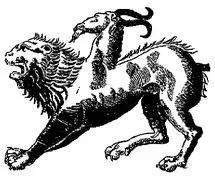
José Martí announced it and he denounced it: the young nation in North America would become a gluttonous empire, its hunger for land insatiable. It had already devoured all of the natives’ territory and half of Mexico’s and it would not stop there.
“No triumph of peace is quite so great as the supreme triumph of war,” proclaimed Teddy Roosevelt, who received the Nobel Peace Prize.
Mr. Teddy was president until 1909, when he gave up invading countries and went off to fight rhinoceroses in Africa.
His successor, William Howard Taft, invoked the natural order of things:
“The whole hemisphere will be ours in fact as, by virtue of our superiority of race, it already is ours morally.”

Some months after invading Iraq, President George W. Bush said he had taken the war to liberate the Philippines as his model.
Both wars were inspired from heaven.
Bush disclosed that God had ordered him to act as he did. And a century beforehand, President William McKinley also heard the voice from the Great Beyond:
“God told me that we could not leave the Filipinos to themselves.
They were unfit for self-government. There was nothing left for us to do but to take them all, and to educate them, and uplift and civilize and Christianize them.”
Thus the Philippines were liberated from the Filipino threat, and along the way the United States also saved Cuba, Puerto Rico, Honduras, Colombia, Panama, Dominican Republic, Hawaii, Guam, Samoa. .
At the time, writer Ambrose Bierce revealed:
“War is God’s way of teaching us geography.”
And his colleague Mark Twain, leader of the Anti-Imperialist League, designed a new flag for the nation, featuring little skulls in place of stars.
General Frederick Funston suggested Twain ought to be hanged for treason.
Tom Sawyer and Huck Finn defended their father.

Unlike Twain, Rudyard Kipling was enthralled by wars of conquest. His popular poem “The White Man’s Burden” exhorted the invading nations to remain on invaded lands until their civilizing mission was complete:
Take up the White Man’s burden—
Send forth the best ye breed—
Go bind your sons to exile
To serve your captives’ need;
To wait in heavy harness,
On fluttered folk and wild—
Your new-caught, sullen peoples,
Half-devil and half-child.
The poet, born in Bombay but raised as an Englishman, saw serfs as too ignorant to know what they needed, and too ungrateful to ever appreciate the sacrifices their masters made for them:
Take up the White Man’s burden—
And reap his old reward:
The blame of those ye better,
The hate of those ye guard—
The cry of hosts ye humour
(Ah, slowly!) toward the light. .

At Wounded Knee, General Nelson A. Miles solved the Indian problem by shooting women and children.
Читать дальше








